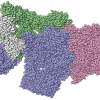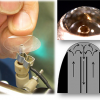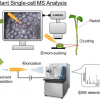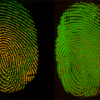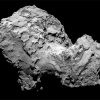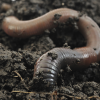Mass Spectrometry News
EMBL-EBI researchers develop a new computational method to study biological signalling networks in healthy and cancer cells from discovery mass spectrometry phospho-proteomics.
Shimadzu was chosen as the award recipient of the 2015 Frost & Sullivan Asia Pacific Mass Spectrometry Company of the Year.
To be chosen as the company of the year two key factors were evaluated—Visionary Innovation & Performance and Customer Impact—according to the criteria identified below.
High-throughput mass spectrometry has been used in one of the largest and most detailed studies of animal molecular biology ever undertaken, to study the cellular proteins of nine species representing a broad cross-section of the animal kingdom. Results confirmed the similarity between species, leading to avenues to study the genetic basis for diseases.
Agena Bioscience, manufacturers of the MassARRAY quantitative method for nucleic acid detection via MALDI-TOF mass spectrometry, has set up a subsidiary in Shanghai, China. “The Chinese market represents a significant portion of Agena Bioscience's global sales with almost 60 MassARRAY® Systems installed to date. Direct presence within China will allow us to expand our reach and foster a high degree of engagement with our local customers in that region”, said Pete Dansky, CEO.
The Novo Nordisk Foundation has awarded a grant of DKK 60 million for an ambitious new research programme in clinical proteomics at the Novo Nordisk Foundation Center for Protein Research, University of Copenhagen. This project is to be led by Professor and Programme Director Matthias Mann. Matthias Mann has authored and co-authored more than 500 publications with a total citation count of more than 100,000, making him one of the most highly cited researchers worldwide.
Material dissolved in the liquid at the port tip is immediately transported into the mass spectrometer, ionised, detected and characterised.
Thanks to seven years of work done at the RIKEN Quantitative Biology Center and Hiroshima University, scientists can take a peek into a single plant cell and—within minutes—get a view of the small molecules, including metabolites, hormones, nutrients and lipids inside it by mass spectrometry.
Agilent is collaborating with researchers from Weill Cornell Medical College, in New York, USA, to investigate the molecular underpinnings of sporadic amyotrophic lateral sclerosis using a multi-omics approach.
Watch the imprint of a tyre track in soft mud, and it will slowly blur, the ridges of the pattern gradually flowing into the valleys. Using imaging mass spectrometry, researchers at the National Institute of Standards and Technology (NIST) have tested the theory that a similar effect could be used to give forensic scientists something they have long wished for: a way to date fingerprints.
SCIEX has announced that Aarhus University Hospital in Denmark has invested in SCIEX QTRAP® 6500 technology to develop novel mass spectrometry-based assays for clinical research laboratories. Scientists at the hospital’s Department of Clinical Biochemistry are using the QTRAP 6500 LC-MS/MS system for advanced clinical research.
A partnership between the Institut de recherches cliniques de Montréal and Nuclea Biotechnologies has been formed to use quantitative mass spectrometry-based assays for insulin, proinsulin and c-peptide to determine risk and progression of type 2 diabetes.
Researchers at the University of Birmingham, UK, have published results that suggest a non-invasive breath test for liver disease using a proton transfer reaction mass spectrometer.
Unique “graffiti” on the walls of a cave in central China describes the effects drought had on the local population over the past 500 years. Stable isotope and elemental analysis of stalactites have been able to confirm the climate variations.
An international collaboration including scientists from the Florida campus of The Scripps Research Institute (TSRI) has used hydrogen–deuterium exchange mass spectrometry to determine the structure of a plant hormone that plays a crucial role in regulating plants’ responses to insects and disease-causing microorganisms as well as normal growth and development.
Congratulations to Peter Derrick on being awarded the Australian and New Zealand Society for Mass Spectrometry (ANZSMS) Medal; the Society’s highest award.
Dietary supplements may can contain a number of unexpected substances, including the active ingredient in Viagra, as detected by a LC-MS technique.
GC-MS results from the Philae lander module from the Comet 67P/Churyumov-Gerasimenko have have revealed several differences from previous observations of comets and from current models.
Thanks to MALDI-MS imaging, scientists have discovered how earthworms can digest plant material, such as fallen leaves, that would defeat most other herbivores.
LC/MS-MS method enables highly sensitive detection for animal species verification in Halal foods.
Laser ablation resonance ionisation mass spectrometry may be the answer to ageing rocks found during space missions to the Moon or other planets.

